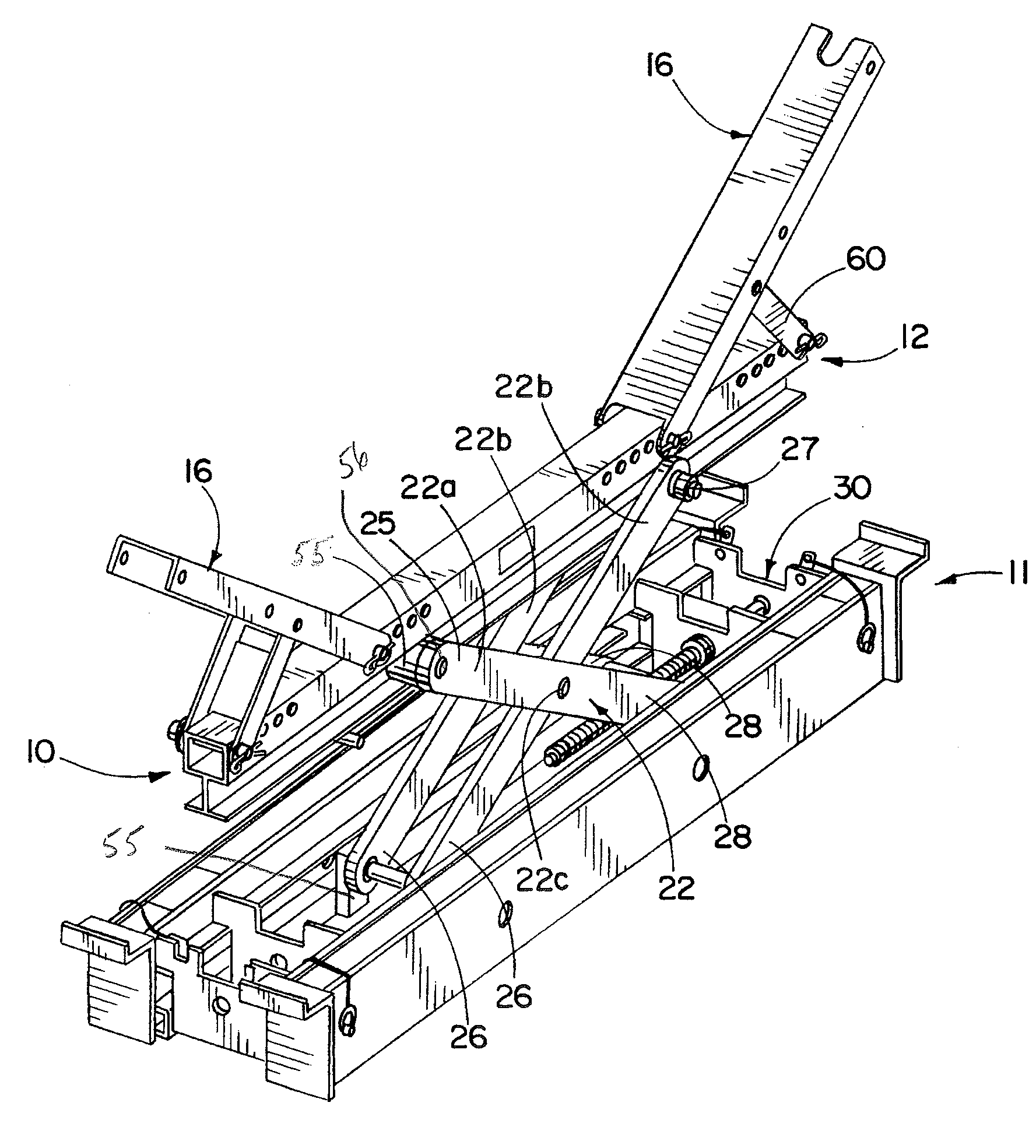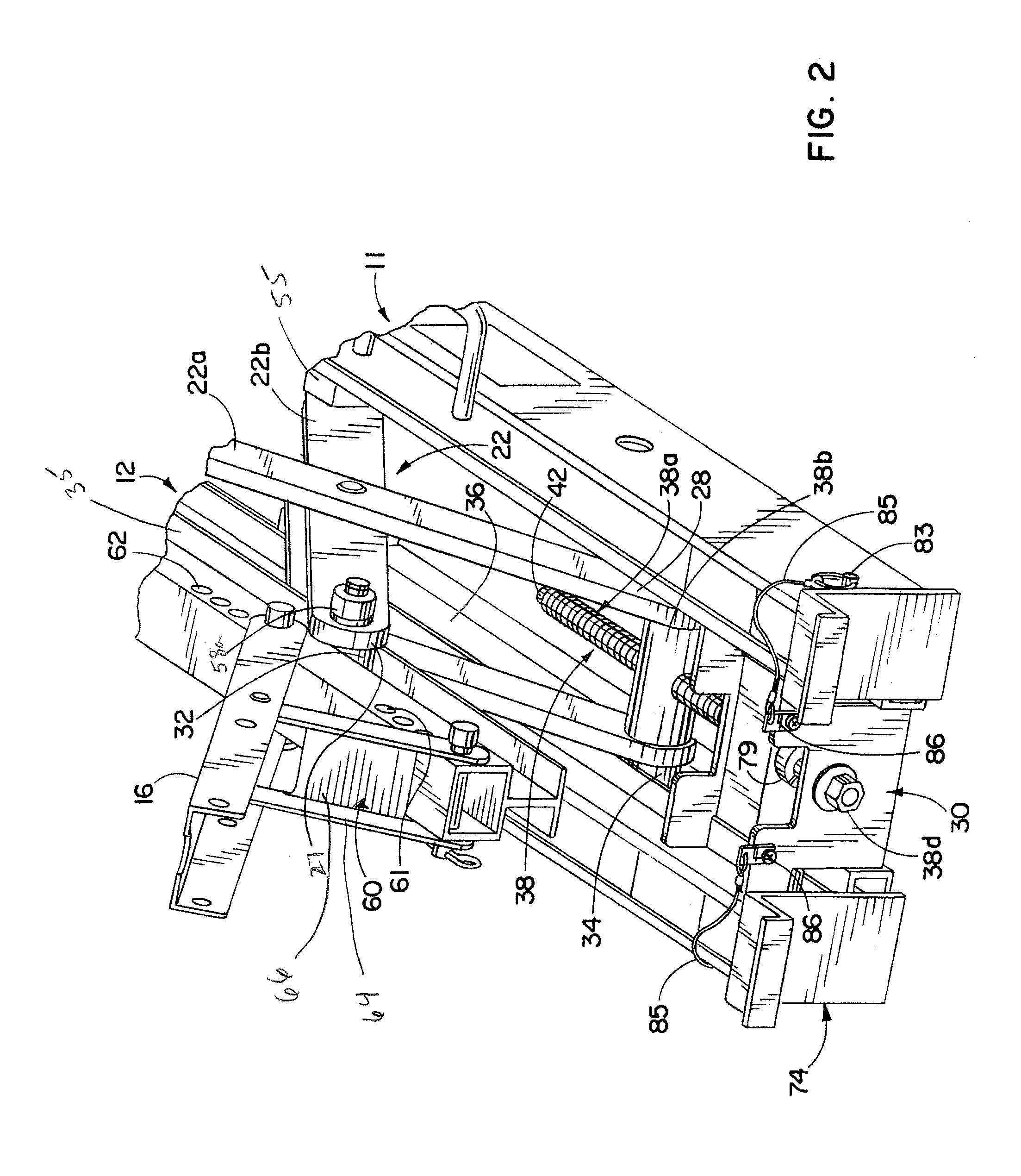Belt Lifter Apparatus
a belt lifter and belt technology, applied in the direction of lifting devices, conveyor parts, loading/unloading, etc., can solve the problems of increasing the downward force on the belt lifter, affecting the lifting effect of the belt lifter, so as to achieve convenient portability, increase the lifting force, and increase the vertical lift
- Summary
- Abstract
- Description
- Claims
- Application Information
AI Technical Summary
Benefits of technology
Problems solved by technology
Method used
Image
Examples
Embodiment Construction
[0026]As shown in the drawings for purposes of illustration, the belt lifting apparatus 10 (hereinafter called “the belt lifter”) is shown in FIG. 1 as comprising a lower support element or base member 11 which is adapted to be mounted on the conveyor frame and a upper support member 12 which is to be positioned under the troughed belt 14 (FIG. 12) or flat belt for lifting the belt vertically upward for the typical purposes of roller repair or for forming of a splicing station. A pair of adjustable, inclined support lifting, wing arms 16 at end portions 12b of the upper support member 12 engage and lift inclined troughed belt from the inclined side rollers 18, and a central portion 12a of the upper support member 12 lifts the central belt portion from the central rollers, as best seen in FIG. 12. Usually the belt lifter will be in a troughed belt configuration such as shown in FIG. 1 wherein the inclined lifting, wing arms 16 are at an incline to the central portion 12a of the upper...
PUM
 Login to View More
Login to View More Abstract
Description
Claims
Application Information
 Login to View More
Login to View More - R&D
- Intellectual Property
- Life Sciences
- Materials
- Tech Scout
- Unparalleled Data Quality
- Higher Quality Content
- 60% Fewer Hallucinations
Browse by: Latest US Patents, China's latest patents, Technical Efficacy Thesaurus, Application Domain, Technology Topic, Popular Technical Reports.
© 2025 PatSnap. All rights reserved.Legal|Privacy policy|Modern Slavery Act Transparency Statement|Sitemap|About US| Contact US: help@patsnap.com



